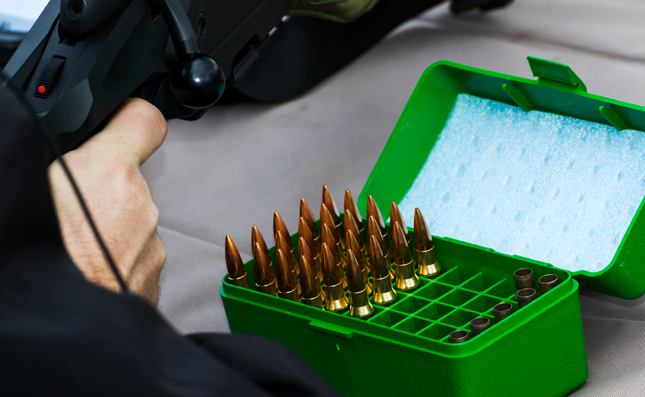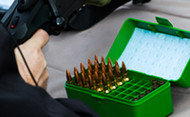Reload Like a Pro - Better Results with Consistency
13th Apr 2016

One of the holy grails of reloading is reliable, accurate, and extremely consistent rifle rounds. Getting match quality results from your own rounds which cost a fraction of factory loaded ammunition is extremely satisfying. At first, it might seem like a daunting task, but even relatively new handloaders can achieve amazing results by following some simple rules.
Recipes
Always start with a proven recipe. If possible, even research to see if anyone with the same firearm as you has used the recipe with good results. Although there will be slight differences between rifles, even if they’re the same make and model, it’s a good indicator of potential success, and some rifle attributes (such as barrel twist rate) will be exactly the same.
The Press
Although it’s not the fastest way to reload, a single stage press often gives the most consistent results, which is why many experienced handloaders stick with this proven design. While turret and progressive presses can be much faster, and can also offer great results, the single stage press minimizes the chances of issues.
The single stage press achieves this higher standard of consistency by holding the reloading die in a stable mount. Many reloaders also utilize a four piece die set in their single stage press, which separates the bullet seating and crimping tasks into two distinct stages. By having a solid die mounting platform and in doing each step with a distinct motion, you’ll get very consistent results.
Cases
Make sure your reloading recipe includes top quality brass cases. Using factory annealed cases and then reannealing them after repeated firing will also aid in consistency. Annealing strengthens the case neck which is critical to both consistency and longevity.
You will also see accuracy increases by fire forming your cases. Fire forming is simply the act of using cases fired at least once in your rifle. This causes the case to expand to the exact dimensions of your chamber, resulting in a perfect fit. Remember to only resize the neck of your fire formed cases, otherwise you will return the case to its original factory dimensions.
Case trimming and then deburring will also help with consistency. If any part of the case neck is longer than another, it will result in slightly uneven pressure on the bullet and decrease accuracy. Trimming your cases will leave burrs however, so make sure to chamfer the case mouth very slightly to remove these.
Powders & Ignition
Your powder and primer selection is also critical to consistency. Having the primer centered and seated perfectly will ensure the powder is ignited reliably. When choosing powder look for those that are specifically designed for the load and bullet weight you are using.
Also take great care to test and review your powder measure frequently. Many presses won’t measure out powder exactly on the first few runs on a new setup, so many reloaders run a few cases through and dump the powder back into the container before they start creating finished rounds. The goal is to have your powder measure stay within 1 grain or less of the target for each case.
Bullets
Selecting the right bullet weight for your barrel twist is critical to good accuracy and consistency. The bullet must be stabilized properly before exiting the barrel, but even the perfect bullet selection can be hampered if it’s not reloaded properly.
Take extra care to seat and crimp your bullets properly. Many reloaders choose to seat and crimp in two distinct stages to decrease the chances of mistakes. Also make sure the heel of the bullet does not get damaged during seating or handling. Any score marks left on the bullet from debris in the reloading equipment or cases can cause gases to escape the barrel unevenly, resulting in inconsistent performance.
Testing
After all your careful, hard work reloading, it’s time to reap the benefits. The obvious test of consistency of course is printing small groups at 100 yards or more. If you are not already very familiar with how your firearm normally shoots, also pit your handloads up against some factory match ammunition to help judge your success.
It’s also recommended to chronograph your rounds to measure the velocity consistency. Shoot strings of ten shots through a chronograph and calculate the SD (standard deviation). You should have a SD of 15 fps or less. The goal, with very careful reloading, is a SD in the single digits.
We hope these tips help you improve the consistency and accuracy of your handloads, and as always, have a safe and enjoyable time shooting!

